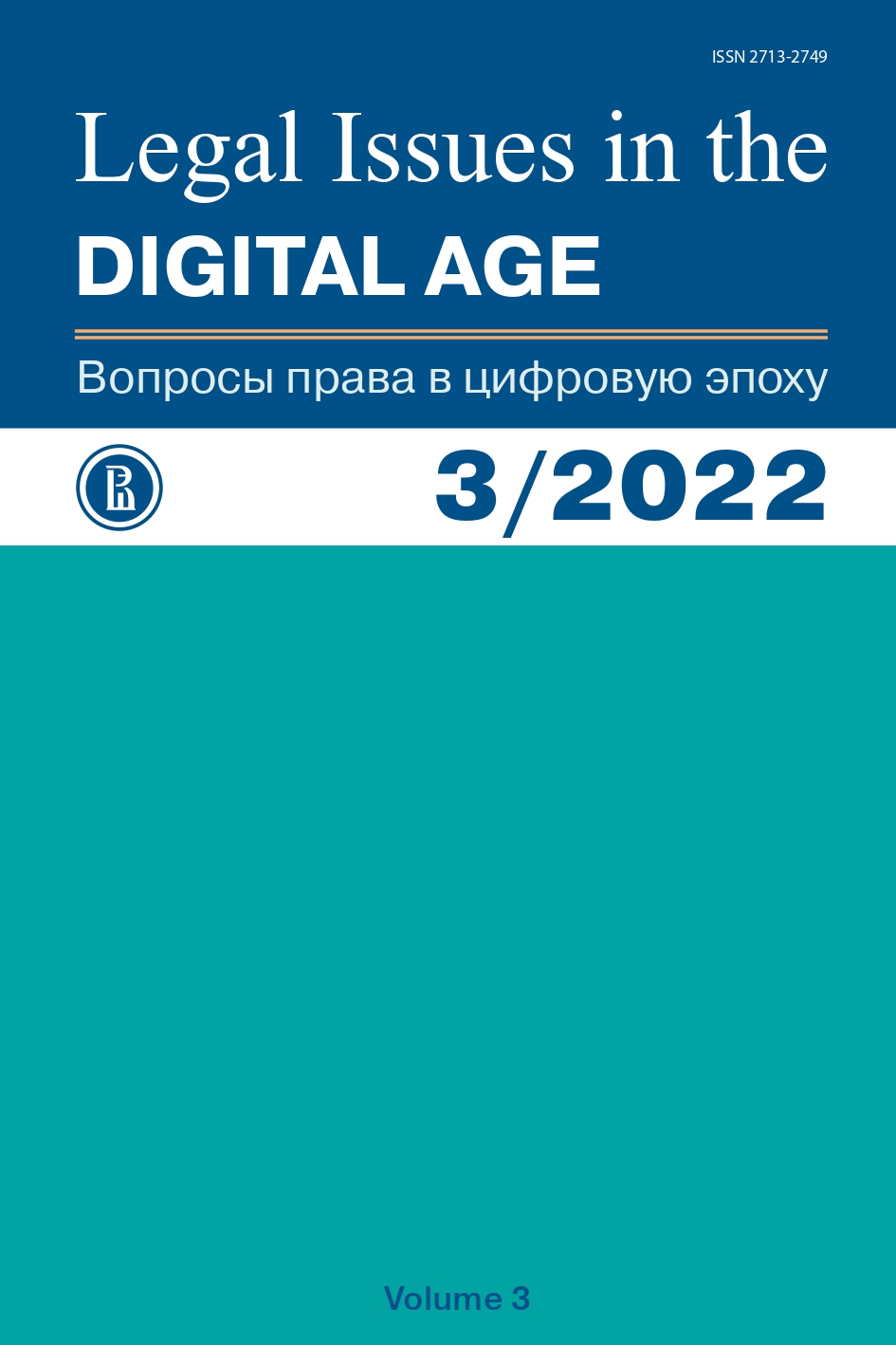Regulatory Principles of Development, Introduction and Use of Artificial Intelligence in Asian countries
Abstract
The Eastern Asia region is emerging as a new centre of innovative development of information technologies and global digital economy. The digital transformation of socioeconomic and political existence of countries is inextricably linked to the development and adoption of new regulatory systems. The overall success of the digital transformation of economy and society is hinged on the introduction of specific groups of technologies. Identifying specific groups of technologies as the reference points of the digital transformation is equally sensible from a regulatory perspective. Artificial intelligence is a key technology for digital transformation of any country at large. This study purports to identify the main regulatory features of the development, introduction and use of artificial intelligence in Asian countries such as People’s Republic of China, Singapore, Republic of Korea and Japan which are global digital leaders and which were chosen for this study on the basis of an analysis of independent ratings. A comparative study of the core regulatory provisions aimed at harmonizing social relationships arising from the development, introduction and use of artificial intelligence in the countries in question allows to propose possible ways of developing national regulation in respect of ethics and law applicable to AI. Based on the methodology of formal logical analysis and comparative law, the study allows to identify the essential regulatory principles of the development, introduction and use of AI in the selected countries. The findings point out a considerable similarity both at the level of strategic documents and codified regulatory principles, with the precedence for welfare of society and state. While some of the documents under study make references to human rights and individual liberties, the key idea is the achievement of prosperity and sustainable development of society. This approach is better suited to be replicated in the context of Russia. While all of the reviewed instru- ments perpetuate a humanistic approach involving an assessment of AI’s impact on users, society, environment, its interpretation in Asian countries differs from the one adopted in the Western world.
References
Aslamova Е.А. et al. (2018) Information system for assessing industrial safety level using the knowledge-based system technology. Reshetnevskiye chteniya=Reshetnikov’s Readings, vol. 2, pp. 221–223 (in Russ.)
Begishev I.R., Khisamova Z.I. (2021) Artificial intellect and criminal law: a study. Мoscow: Prospekt, 192 p. (in Russ.) DOI: https://doi.org/10.31085/9785392338900-2021-192
Chesterman S. (2020) Artificial Intelligence and the Problem of Autonomy. Notre Dame Journal of Emerging Technologies, issue 2, pp. 211–250.
Engstrom D., Ho D. (2020) Algorithmic accountability in the administrative state. Yale Journal of Regulation, vol. 37, no. 3, pp. 800–854.
Floridi L., Cowls J. (2021) A Unified Framework of Five Principles for AI in Society. Philosophical Studies Series, vol. 144, pp. 5–17. DOI: https://doi.org/10.1007/978-3-030-81907-1_2
Gentzel M. (2021) Biased Face Recognition Technology used by Government: Problem for Liberal Democracy. Philosophy and Technology, vol. 34, no. 4, pp. 1639–1663. DOI: https://doi.org/10.1007/s13347-021-00478-z
Khabrieva Т. Ya., Chernogor N.N. (2018) Law in the era of digital reality. Zhurnal rossiyskogo prava=Journal of Russian Law, no. 1, pp. 85–102 (in Russ.) DOI: https://doi.org/10.12737/art_2018_1_7
Kokuryo J. (2022) An Asian perspective on the governance of cyber civilization. Available at: https://doi.org/10.1007/s12525-022-00523-5 DOI: https://doi.org/10.1007/s12525-022-00523-5
Nikolaenko S., Kadurin А., Archangelskaya Е. (2020) Deep Learning. Saint Petersburg: Piter, 480 p. (in Russ.)
Oviatt S. (2021) Technology as infrastructure for dehumanization: three hundred million people with the same face. ICMI 2021: Proceedings of the 2021 International Conference on Multimodal Interaction, pp. 278–287. DOI: https://doi.org/10.1145/3462244.3482855
Padhy N.P. (2005) Artificial intelligence and intelligent systems. Oxford: University Press, 231 p.
Roberts H., Cowls J. et al. (2020) The Chinese approach to artificial intelligence: an analysis of policy, ethics, and regulation. Available at: https://link.springer.com/content/pdf/10.1007/s00146-020-00992-2.pdf DOI: https://doi.org/10.1007/978-3-030-81907-1_5
Silver D., Schrittwieser J. et al. (2017) Mastering the game of Go without human knowledge. Nature, no. 550, pp. 354–359. DOI: https://doi.org/10.1038/nature24270
Vaipan V.А. et al. (2019) Regulating Economic Relationships in the Modern Context of Digital Economic Development: A Study. Мoscow: Yustitsinform, 376 p. (in Russ.)
Vasiliev А.А., Ibraghimov Zh.I. (2019) The regulation of robotics and artificial intelligence in the EU. Rossiysko-aziatskiy pravovoy zhurnal=Russian-Asian Law Journal, no. 1, pp. 50–54 (in Russ.)
Vasiliev А.А., Pechatnova Yu. V. (2020) Artificial intelligence and law: issues, prospects. Rossiysko-aziatskiy pravovoy zhurnal=Russian-Asian Law Journal, no. 2, pp. 14–18 (in Russ.) DOI: https://doi.org/10.14258/ralj(2020)2.3
Xu L. (2020) The Dilemma and Countermeasures of AI in Educational Application. ACM International Conference Proceedings, pp. 289–294. DOI: https://doi.org/10.1145/3445815.3445863
Yakushev D.I. (2016) The Definition of Artificial Intelligence. In: Selected Works: Regional Information Technology and Cyber Security. Saint Petersburg: Society of Information Technology, Computing Equipment, Communication and Management Systems, pp. 67–69 (in Russ.)
Zaginailo М.V., Fathi V.А. (2020) The genetic algorithm as an efficient tool of evolutionary algorithms.Innovatsii.Nauka.Obrazovaniye=Innovations, Science, Education, no. 22, pp. 513–518 (in Russ.)

Authors who publish with this journal agree to the Licensing, Copyright, Open Access and Repository Policy.









